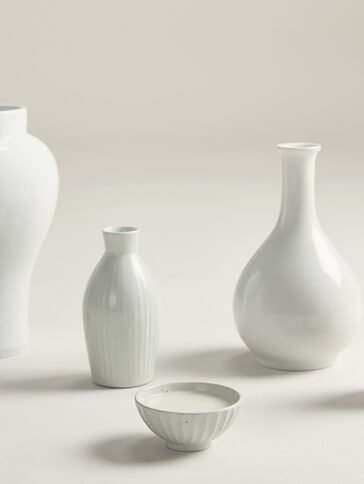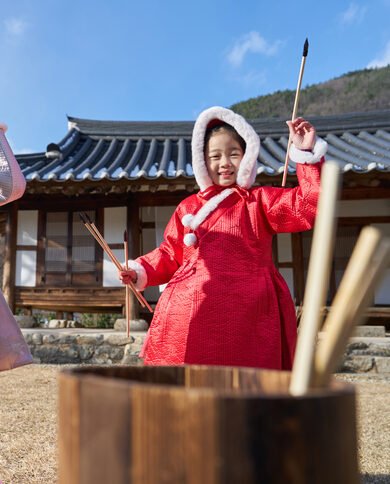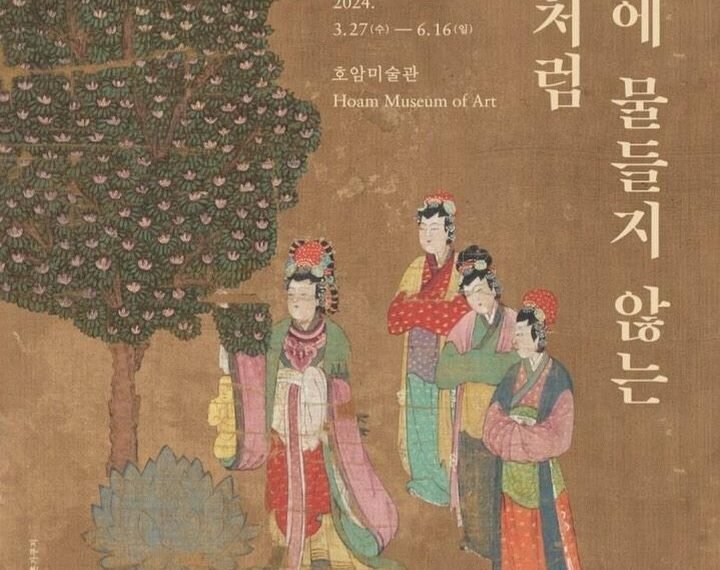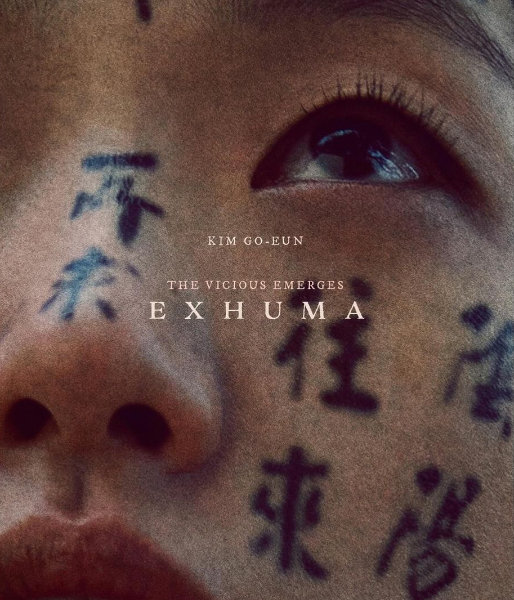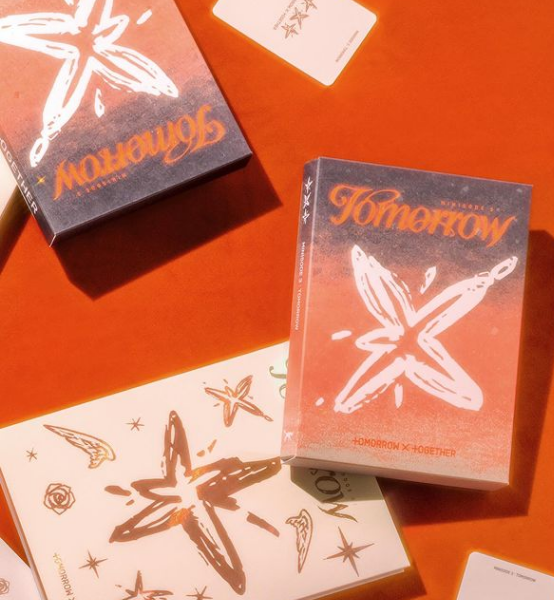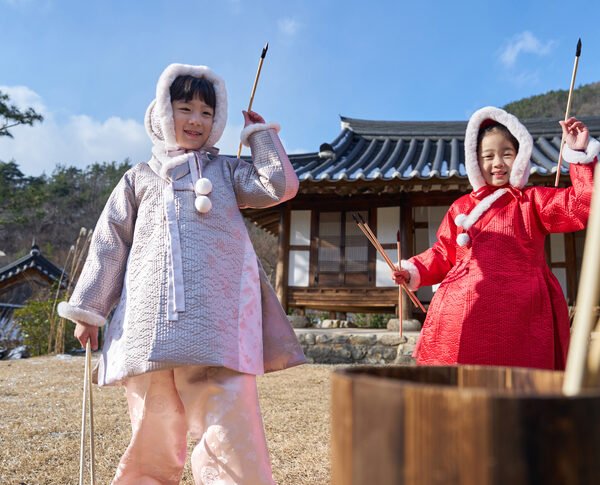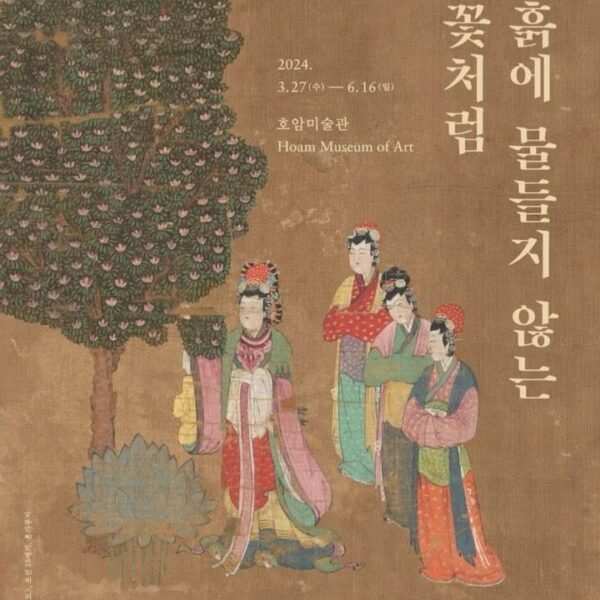Korea’s nightlife isn’t just about neon lights and bustling streets; it’s also about the vibrant festivals that illuminate the night sky. From dazzling fireworks displays to serene lantern festivals, there’s something enchanting about experiencing Korean culture after sunset. Let’s delve into ten of the most captivating nighttime festivals across Korea.
Table of Contents
Toggle1. 함안 낙화놀이 (Haman Nakhwanori Fireworks)
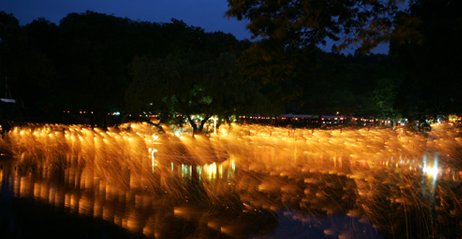
Held in Haman, this fireworks extravaganza is a spectacle to behold. Taking place annually, the Haman Nakhwanori Fireworks Festival lights up the night sky with a mesmerizing display of colors and patterns. Celebrated on the occasion of Seokga Tanshinil, also known as Buddha’s Birthday, this festival holds deep cultural significance for the local community. Visitors gather along the Haman River to witness this breathtaking event, which usually occurs in late summer. The festival’s origins can be traced back centuries, making it not only a visual delight but also a cultural celebration.
Venue and Dates
The festival takes place in the picturesque surroundings of Mujinjeong, Haman County, spanning from May 14th to May 15th Buddha’s birthday, 2024, this year. The event runs from 4:00 PM to 10:00 PM, offering ample time for visitors to immerse themselves in the festivities.
2. 부산 삼광사 연등축제 (Busan Lotus Lantern Festival)
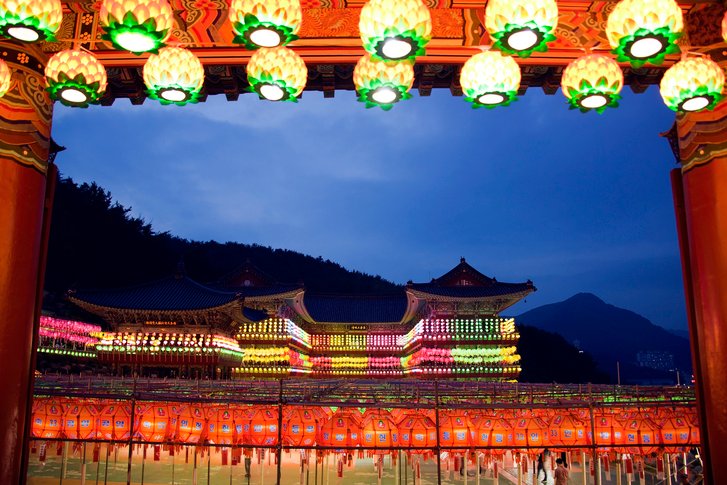
In Busan, the Lotus Lantern Festival at Samgwangsa Temple is a sight to behold. Thousands of colorful lanterns adorn the temple grounds, creating a magical ambiance. This festival, rooted in Buddhist traditions, typically occurs in spring to celebrate Buddha’s birthday. One of the most iconic rituals of the Haman Nakhwanori Festival is the hanging of “Nakhwa,” which are wooden frames adorned with charcoal dust. These Nakhwa are set ablaze, creating a mesmerizing display of fireworks that resemble blossoming flowers floating above the water’s surface. Visitors can participate in lantern-making workshops and enjoy cultural performances, making it a memorable experience for all.
Attractions and Activities
Lantern Parade
The highlight of the Busan Lotus Lantern Festival is undoubtedly the lantern parade, where thousands of illuminated lanterns are paraded through the streets of downtown Busan. The procession features colorful floats, traditional music, and mesmerizing dance performances.
Cultural Performances
Visitors can enjoy a wide range of cultural performances showcasing traditional Korean music, dance, and martial arts. These performances offer a glimpse into the rich cultural heritage of Korea and provide entertainment for people of all ages.
Temple Visits and Rituals
During the festival, many temples in Busan open their doors to visitors, offering opportunities to participate in Buddhist rituals and ceremonies. Visitors can experience the tranquility of temple life and gain insights into Buddhist teachings and practices.
Venue and Dates
The Busan Lotus Lantern Festival typically takes place in downtown Busan, with the main events centered around the historic streets of Yongdusan Park and BIFF Square. The festival is held annually in the weeks leading up to Buddha’s Birthday, which falls on the eighth day of the fourth lunar month.
3. 부산 불꽃축제 (Busan Fireworks Festival)
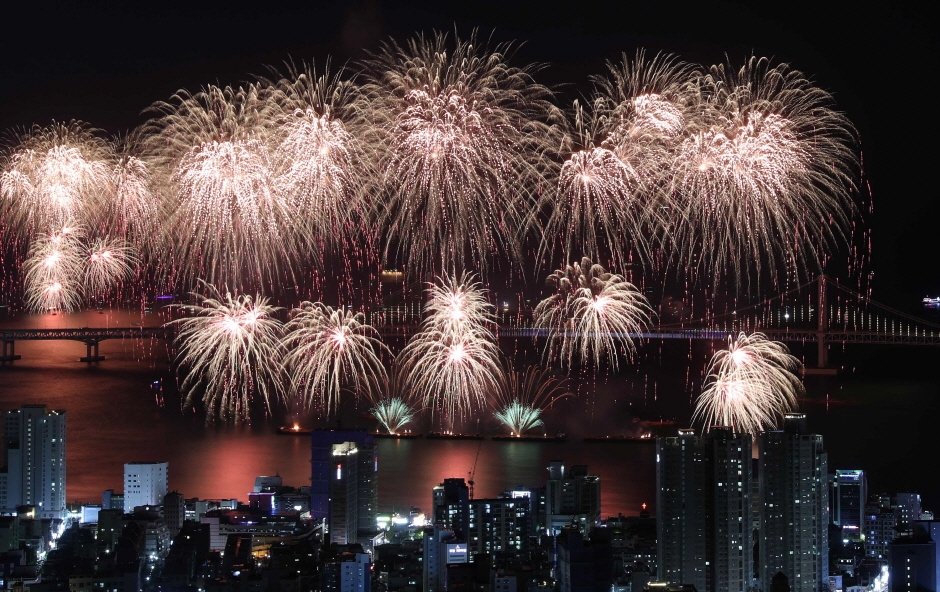
Another gem in Busan’s festival calendar is the Busan Fireworks Festival. Held annually, usually in fall, this event lights up the night sky over Gwangalli Beach. Spectators flock to the beach to witness the dazzling pyrotechnic displays set against the backdrop of the city skyline. The festival also features music performances and food stalls, adding to the festive atmosphere.
The Busan Fireworks Festival traces its origins back to the early 2000s when it was first organized to commemorate the city’s maritime heritage and promote tourism. Since then, it has grown into one of the largest and most anticipated fireworks displays in Asia. The highlight of the festival is undoubtedly the breathtaking fireworks display, which illuminates the night sky with a kaleidoscope of colors and patterns. Pyrotechnic experts from various countries compete to create the most spectacular fireworks show, delighting audiences with their dazzling creations.
Venue and Dates
The Busan Fireworks Festival typically takes place along the iconic Gwangalli Beach, offering spectators a stunning backdrop of the city skyline and the Gwangan Bridge. The festival is usually held in the fall, with exact dates varying from year to year.
4. 서울 밤의 석조전 (Night of Seokjojeon in Seoul)
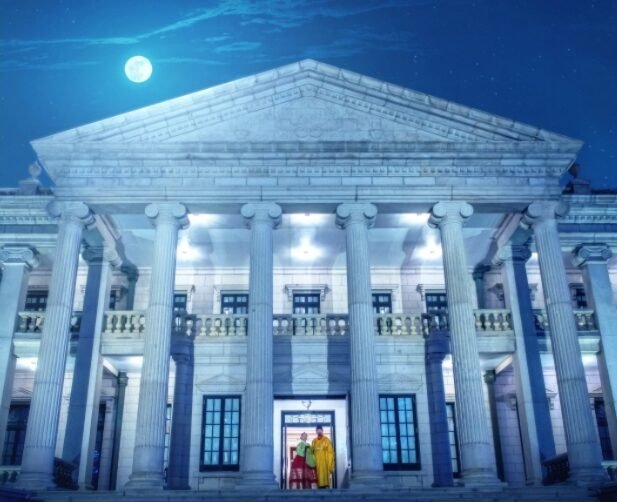
Seoul’s Night of Seokjojeon offers a unique blend of history and entertainment. Held at the historic Seokjojeon Hall in Deoksu Palace, this event showcases traditional Korean performances against the backdrop of the illuminated palace grounds. Visitors can immerse themselves in Korean culture while enjoying music, dance, and storytelling under the stars.
Historical Background
Origins of Seokjojeon
Seokjojeon, also known as the Seokjojeon Hall, is a historic building located within the Deoksugung Palace complex in central Seoul. Built in the late 19th century during the Joseon Dynasty, Seokjojeon served as a royal library and cultural center for the Korean aristocracy.
Significance of the Night Event
The Night of Seokjojeon event aims to showcase the historical significance and architectural beauty of Seokjojeon, offering visitors a rare glimpse into Korea’s cultural heritage after sunset. By illuminating the hall and surrounding grounds, the event creates a magical atmosphere that transports visitors back in time.
Venue and Dates
The Night of Seokjojeon event takes place at the Deoksugung Palace complex, with Seokjojeon Hall as the focal point. The event is typically held on select evenings throughout the year, allowing visitors to experience the enchanting beauty of the palace grounds after dark.
5. 김천 연화지 벚꽃축제 (Yeonhwaji Cherry Blossoms Festival, Gimcheon)
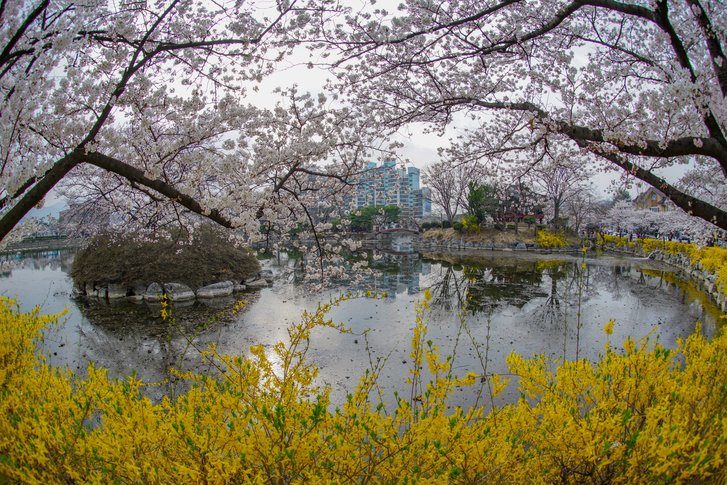
Gimcheon’s Yeonhwaji Cherry Blossoms Festival is a feast for the senses. As spring blooms, Yeonhwaji Park transforms into a sea of pink cherry blossoms, creating a picturesque setting for visitors. The festival features various cultural performances, including traditional music and dance, along with food vendors offering local delicacies.
Historical Background
Origins of the Festival
The Yeonhwaji Cherry Blossoms Festival traces its roots to the early 2000s when local residents and government officials came together to celebrate the blooming of cherry blossoms in the area. Over the years, the festival has grown into one of Gimcheon’s most anticipated events, attracting visitors from across the country and beyond.
Cultural Significance
Cherry blossoms hold special significance in Korean culture, symbolizing renewal, beauty, and the transient nature of life. The festival offers an opportunity for people to appreciate the fleeting beauty of these delicate flowers and celebrate the arrival of spring.
Venue and Dates
The Yeonhwaji Cherry Blossoms Festival takes place at Yeonhwaji, a scenic reservoir located in Gimcheon, Gyeongsangbuk-do Province. The festival is typically held in early spring, coinciding with the peak blooming period of cherry blossoms, which usually occurs in April.
6. 남원 광한루원 야간개장 (Night at Gwanhalluwon, Namwon)
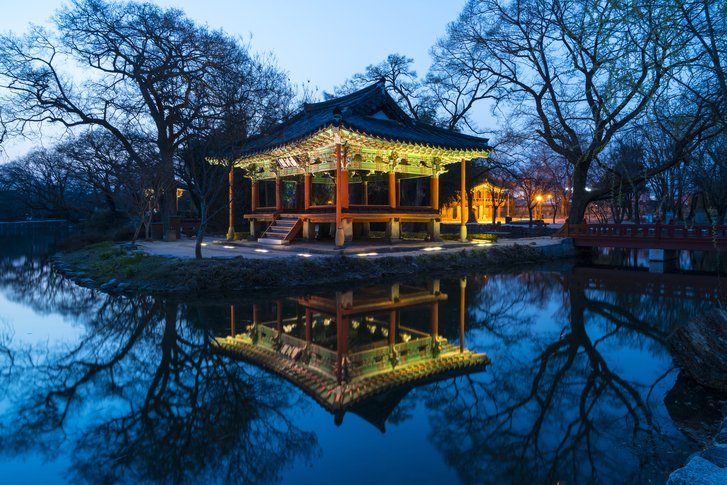
Namwon’s Gwanhalluwon opens its gates to visitors for a special nighttime experience. Amidst the tranquil gardens and traditional architecture, visitors can stroll under the soft glow of lanterns, creating a serene atmosphere. This nighttime opening allows visitors to appreciate the beauty of Gwanhalluwon in a different light, quite literally.
Historical Background
Origins of Gwanhalluwon
Gwanhalluwon, also known as Gwanghallu Garden, is a historic garden located in Namwon, Jeollabuk-do Province. Built during the Joseon Dynasty in the 15th century, Gwanhalluwon served as a royal garden and retreat for the nobility.
Cultural Significance
Gwanhalluwon is renowned for its exquisite beauty and cultural significance, with its meticulously landscaped grounds, traditional pavilions, and scenic ponds reflecting the elegance and sophistication of traditional Korean garden design.
Venue and Dates
Night at Gwanhalluwon takes place at the Gwanhalluwon garden in Namwon, offering visitors a rare opportunity to explore the grounds after sunset. The event is typically held on select evenings during the spring and autumn seasons, when the garden is illuminated with atmospheric lighting.
7. 경주 동궁과월지 야간개장 (Night at Donggung Palace and Wolji Pond, Gyeongju)
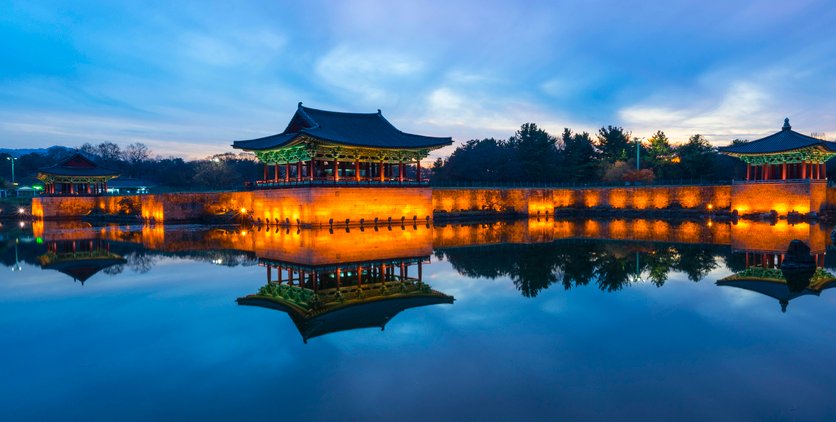
Gyeongju’s Donggung Palace and Wolji Pond offer a captivating glimpse into Korea’s ancient past. During nighttime openings, the palace grounds are illuminated, highlighting the architectural splendor of this historic site. Visitors can take leisurely walks around the pond, soaking in the ambiance of this tranquil setting.
Historical Background
Origins of Donggung Palace and Wolji Pond
Donggung Palace and Wolji Pond, also known as Anapji, are historic sites located in Gyeongju, South Korea. Built during the Silla Dynasty in the 7th century, Donggung Palace served as a secondary palace for the royal family, while Wolji Pond was a picturesque artificial pond used for various royal ceremonies and events.
Cultural Significance
Donggung Palace and Wolji Pond are celebrated for their architectural beauty and cultural significance, with their scenic landscapes and ancient ruins providing a glimpse into Korea’s rich history and heritage.
Venue and Dates
Night at Donggung Palace and Wolji Pond takes place at the historic site of Donggung Palace and Wolji Pond in Gyeongju. The event is typically held on select evenings throughout the year, allowing visitors to explore the palace grounds and pond under the enchanting light of the moon.
8. 경주 형산강 연등문화축제 (Gyeongju Yeondeung Culture Festival)
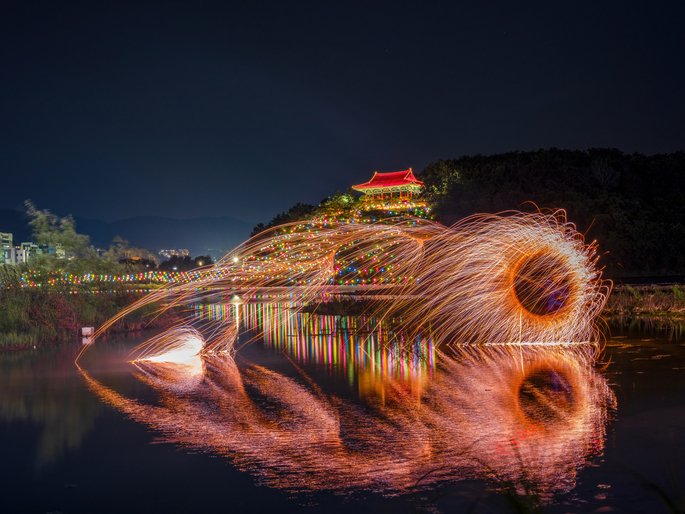
The Gyeongju Yeondeung Culture Festival celebrates Korea’s rich cultural heritage. Held near the ancient Gyeongju National Museum, this festival features traditional performances, art exhibitions, and lantern displays. Visitors can immerse themselves in the sights and sounds of Korea’s past while enjoying the festive atmosphere.
Historical Background
Origins of the Festival
The Gyeongju Yeondeung Culture Festival has its roots in the ancient tradition of lighting lanterns to commemorate Buddha’s birthday and honor the spirits of ancestors. Over time, the festival has evolved into a celebration of Gyeongju’s cultural heritage and a showcase of traditional arts and crafts.
Cultural Significance
The festival holds special significance for the people of Gyeongju, serving as a reminder of their rich history and cultural heritage. It brings together locals and visitors alike to celebrate their shared traditions and create lasting memories.
Venue and Dates
The Gyeongju Yeondeung Culture Festival takes place along the banks of the Hyeongsan River, with various events and activities held at different locations throughout the city. The festival typically coincides with Buddha’s birthday celebrations in May, offering visitors a chance to experience the magic of lantern-lit streets and cultural performances.
9. 서울세계불꽃축제 (Seoul International Fireworks Festival)
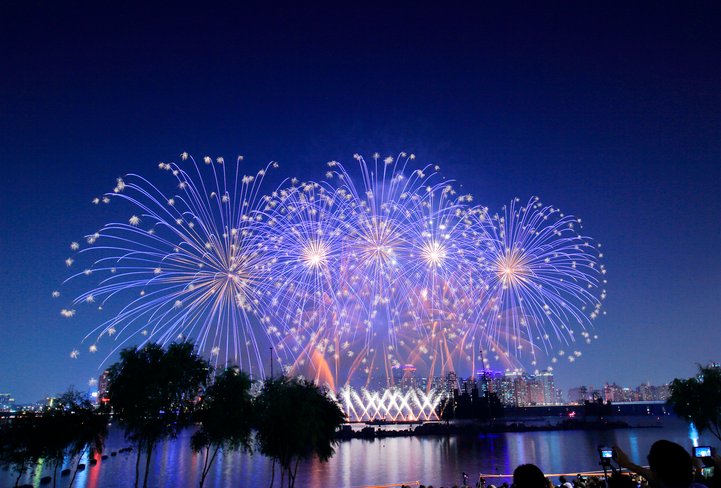
Seoul’s International Fireworks Festival is a highlight of the city’s event calendar. Held annually at Yeouido Hangang Park, this spectacular event attracts thousands of spectators. International teams compete to create the most dazzling fireworks displays, lighting up the night sky over the Han River.
Venue and Dates
The Seoul International Fireworks Festival takes place at various locations throughout the city, with prime viewing spots along the Han River and other iconic landmarks. The festival typically lasts for several days, allowing visitors ample opportunity to experience the magic of the fireworks displays.
10. 서울 창경궁 야간개장 (Night at Changgyeonggung, Seoul)
Step back in time and immerse yourself in the beauty and history of Seoul’s Changgyeonggung Palace during the enchanting Night at Changgyeonggung event. This special evening opening allows visitors to explore the palace grounds under the soft glow of lanterns, experiencing the timeless charm of one of Korea’s most treasured cultural landmarks after dark.
Historical Background
Origins of Changgyeonggung Palace
Changgyeonggung Palace, originally built during the Joseon Dynasty in the 15th century, served as a secondary palace for the royal family. Over the centuries, it has been renovated and expanded, bearing witness to the tumultuous history of Korea.
Cultural Significance
Changgyeonggung Palace is renowned for its architectural beauty and historical significance, reflecting the elegance and sophistication of traditional Korean palace architecture. The palace grounds are home to lush gardens, serene ponds, and beautifully preserved buildings that offer visitors a glimpse into Korea’s rich cultural heritage.
Venue and Dates
Night at Changgyeonggung takes place at Changgyeonggung Palace in Seoul, offering visitors a rare opportunity to explore the palace grounds after sunset. The event is typically held on select evenings throughout the year, allowing visitors to experience the beauty of the palace in different seasons.
Related posts:
- Exploring Korea’s 2024 Persimmon Festivals: Unveiling Locations and Schedules
- Discover Seoul’s Top 3 Cherry Blossom Festivals
- Exploring Buddhist Art from the Perspective of ‘Gender’ at the Hoam Art Museum in South Korea
- Exploring Korean Traditional Royal Court Liquor, Hyangonju : A Journey into Intangible Cultural Heritage
- Summit Stories: Exploring Korea’s 10 Majestic Mountains perfect for hiking
- Cheong Wa Dae: Exploring the Grandeur of South Korea’s Presidential Blue House
- Exploring the Exquisite Flavors of Royal Cuisine in Korea


